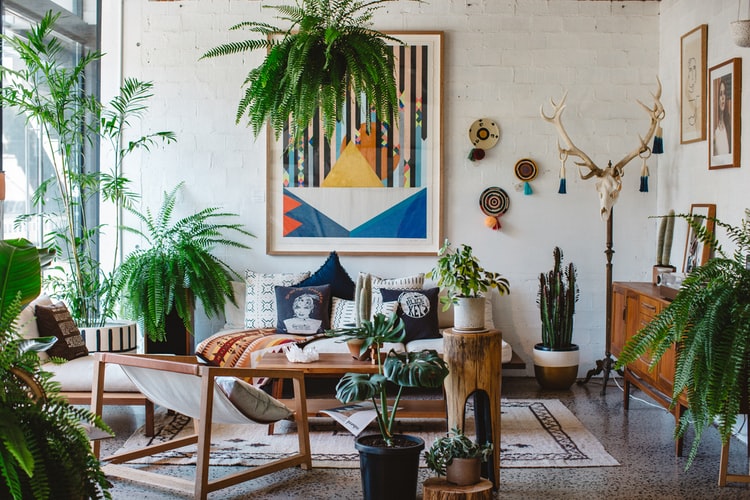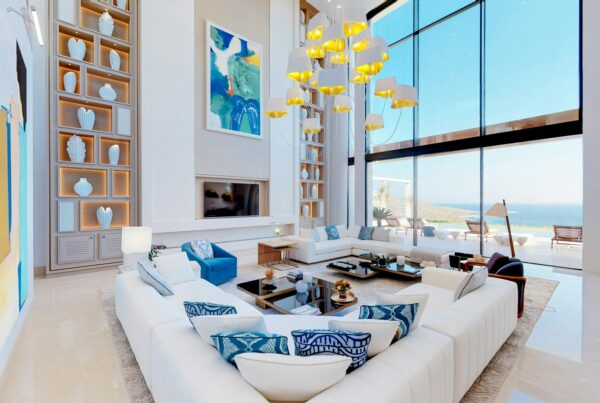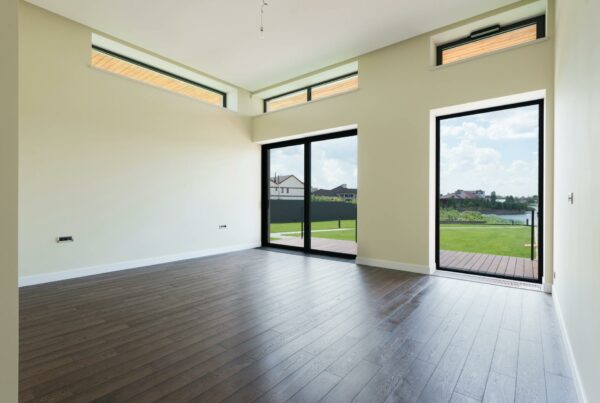Last Updated on January 2, 2023
Plants can dramatically improve a room’s ambiance and even reduce stress. Having plants in a living room, where many people spend a lot of time, can make it feel like an oasis and provide a sense of calm. However, creating a living room paradise is a lot easier if you know how to arrange your plants.
The many factors at play, such as available light and space, your personal preferences, your sofa, and how much time you wish to spend on plant care, can make arrangement decisions challenging.
Fortunately, we have some great tips to help you decide how to arrange plants in a living room based on your setup. For starters, keep things like color, texture, and height front of mind. These elements will help you choose the best plants and make arranging them a ton of fun.
Keep reading for tips on how to bring your living room to life.
Tips for Arranging Plants and Greenery in Your Living Room
Before you make the trip to an indoor plant store, having a rough idea of what types and number of plants would be ideal for your vision and living room conditions will help make your decisions easier.
1. For an Organic Look, Avoid Uniformity with Plants
The ‘Rule of Thirds’ is a design principle that can guide you when deciding how to arrange your living room plants. This rule suggests that objects look more appealing and organic when laid out in groups of three, or at least not in even-numbered groups. If you think of how plants typically grow in nature, there are various species, sizes, and foliage types. Variety in nature creates a healthier ecosystem — a principle that can also apply to your living room.
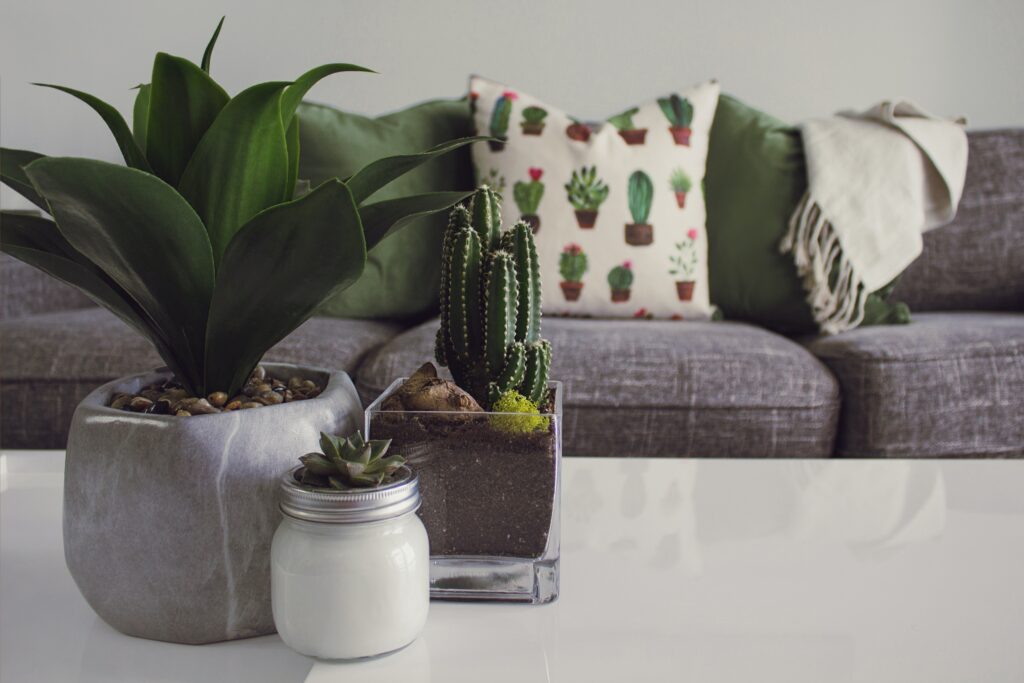
Group plants with different shapes and foliage types, such as a Zanzibar Gem — or ZZ plant — a Snake plant, and a smaller, leafy plant such as the Anthurium, to add variety.
“Make sure to only get low maintenance plants should you be working or are out of the property a lot,” reminds Ruban Selvanayagam of home buying / fast sales firm Property Solvers.
2. Or, Go Symmetrical for More Formality
An exception to the rule of thirds applies if you’re going for a more formal look. In this case, symmetrically pairing two similar plants works nicely. Consider hanging or placing two identical plants such as ferns on either side of a regal armchair.
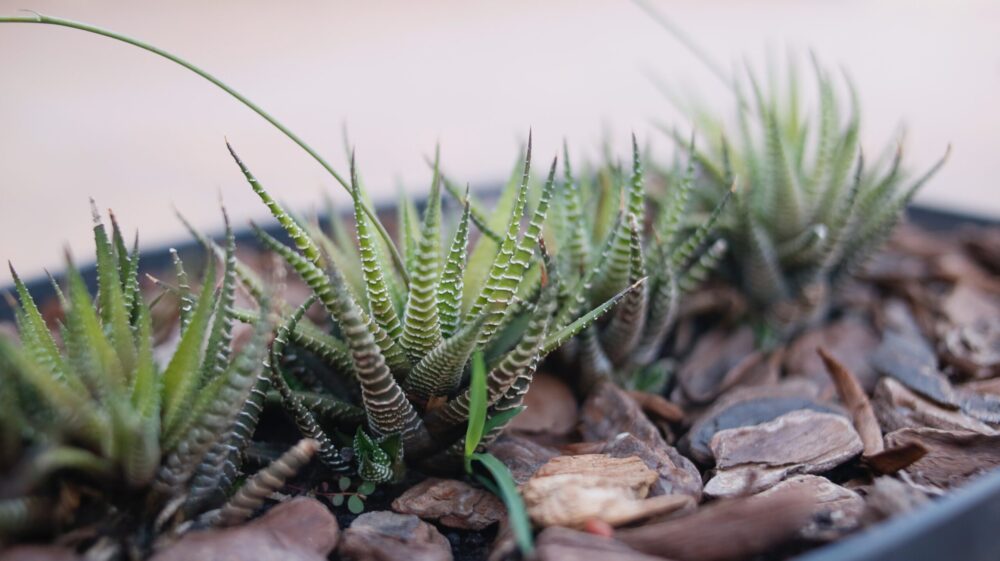
Additionally, arrange an even number of identical upright potted plants like Geraniums on a prominent shelf or side table for a symmetrical and polished look.
However, if you find it difficult to arrange your plants to achieve a symmetrical and formal look, you may consider working with professionals for the job. With many options available out there, it’s easy to get the services of an indoor plant hire company in the area. They have the knowledge and skills necessary for getting the look you want and creating a beautiful plant paradise in your living room. They can transform your space with beautiful and healthy indoor hire plants.
So, if you’re looking for an indoor plant hire company, you may learn more here or check out some websites to get further information.
3. Full Circle — Embrace Simple Plants
If you prefer a simple, more minimalist look, grouping plants that are very similar or even the same can fulfill a need for order. As in groupings of wall art or even notes in a song, repetition of a common element can be powerful. If you thrive on structure, try displaying several of these plants together in a row or on a table. Having some commonality in your plant groupings can help them look like they belong together naturally. Base their common traits on species, leaf color, texture, or size.
Plants such as the Chinese money plant (Pilea Peperomioides) look positively cheerful in a cluster.
4. Place Large Plants in Open Areas
Large plants work best in your living room’s open spaces, such as a corner or in front of an unused hearth. Grouping tall plants in attractive planters of varying shades and materials in one corner of your room works beautifully, especially if they’re of varying heights. You can place one or two on stools or baskets to create a pleasing variety.
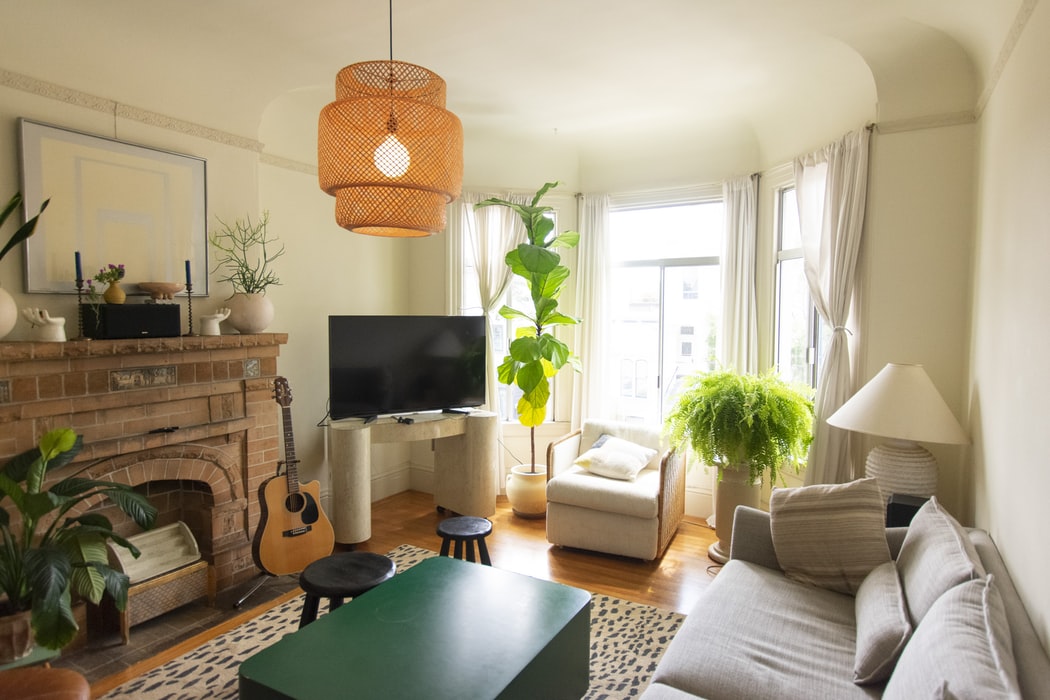
Plants that grow upright and look great together include Palms and various Cacti. Just don’t cover up wall decor – especially your
5. Create Depth and Height with Plants
Group plants of different sizes to create a sense of depth and height and help a small room look larger. Try to avoid grouping plants that are uniform in size — particularly height — so you don’t end up with a blended mass. Arrange your plant groupings with at least one plant that is noticeably taller than the rest to create a more dynamic effect. Tall plants with vertical foliage such as a Bird of Paradise plant naturally draw the eye upward, enlarging the perception of a small living room.
Hang a Boston fern from your ceiling to optimize a small living room and make it cozy at the same time.
6. Play With Different Colored Plants
A mix of plants with contrasting colors provides a bright and bold look for your living room. Color comes from plants’ flowers, foliage, bark, and even your planters. If you think of your plants as integral to your decor, it can be fun to mix and match them with your living room furniture, art, and carpets. However, while it may be tempting to try to match the plant’s color with your furniture, variety often works best.
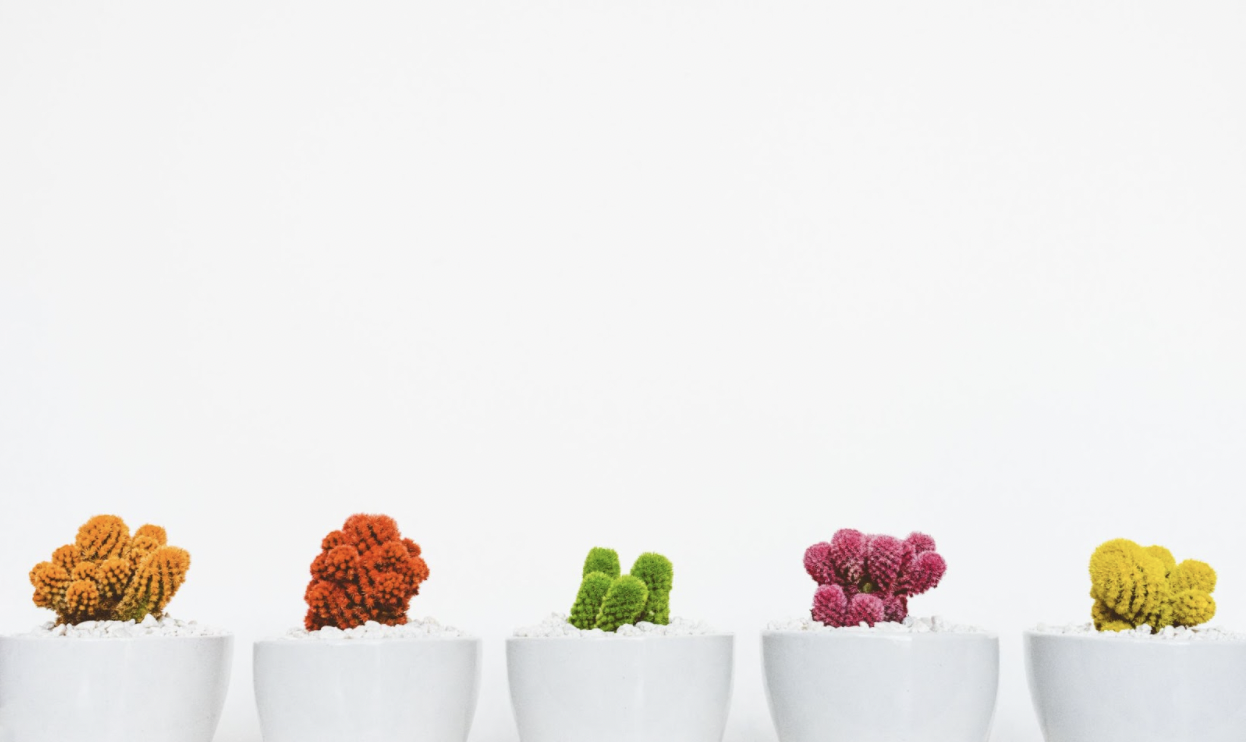
One fun way to play with color is to follow the Rule of Thirds mentioned earlier. Without going too wild — unless that’s your style — choose plants or planters with a primary, secondary, and accent color. For instance, if you’re inclined to choose only black or white planters, try adding one more color. It doesn’t have to be bright — even a neutral color like terracotta will do the trick.
A variegated monsteras plant has foliage with two or more shades of green and will add a pop of natural color among more common singularly colored plants.
Aside from using colorful plants, you can also play with colors in your arrangement by spicing up your display with colored pots. For example, you can use terracotta pots for plants like succulents. If you have growing plants, fiberglass pots can be ideal. Plastic pots can also be a great way of arranging plants in your living room since they’re available in various colors, depending on your choice. Hence, if you want to make your plant paradise aesthetically pleasing to the eyes, consider using various colored pots to add depth and create an amazing yet unique look.
7. Pair Unexpected Groupings for Added Texture
Plants are highly effective at adding texture to your space, especially when paired unexpectedly. Add contrast by grouping plants with different foliage textures, such as smooth with rough or speckled with plain.
Place trailing plants like English ivy and a colorful potted option like a Peace Lily together on bookshelves or your coffee table and add life and texture to a potentially overlooked area.
8. Consider Plants’ Needs
When you arrange plants in a living room, it’s essential to consider their needs, such as water and light. For example, ferns prefer humid environments and can grow well in areas with low sunlight. Placing plants that prefer the same conditions close together will help them thrive and simplify the maintenance needed from you.
Avoid placing sun-loving and shade-loving plants in the same area of your living room, as this can make it hard for either to survive.
On the other hand, it’s also important to arrange your plants in an area in your living room free from any dangers. For instance, find a location wherein your plants are safe from unnecessary heat sources, water leaks, and even sharp objects. By choosing the right area, your plants will be safe from the risk of pests and other dangerous situations in your house.
Arrange Your Living Room Plants for You
The way you decide to arrange your living room plants will be both highly personal — based on your tastes — and practical — based on how the room will support them.
Even a lack of space can provide some inspiration for you to get innovative. Take advantage of your vertical space with a wall garden, or keep it simple with some small potted plants on a shelf or small side table. If your living room is primarily dark, or you don’t have much time to nurture them, consider mixing some colorful artificial plants with some shade-loving options.
Whether you’re just getting started or you’ve decided to shake up your living room’s decor, remember that practice makes perfect, and nothing is set in stone. Learning how to arrange plants in a living room can take some trial and error. Fortunately, it can be a fun and rewarding adventure that will keep on giving as your skills grow right along with your plants.


